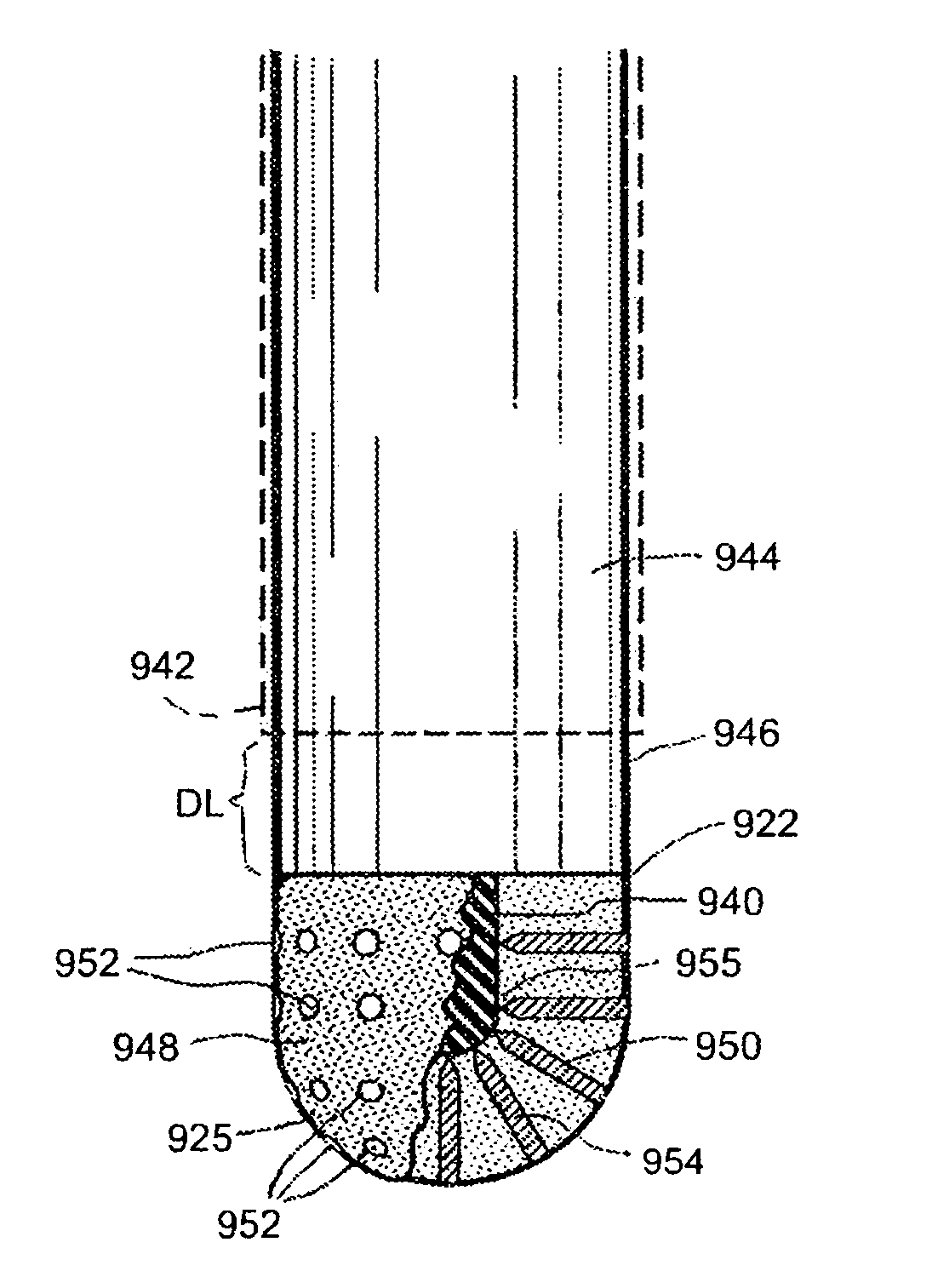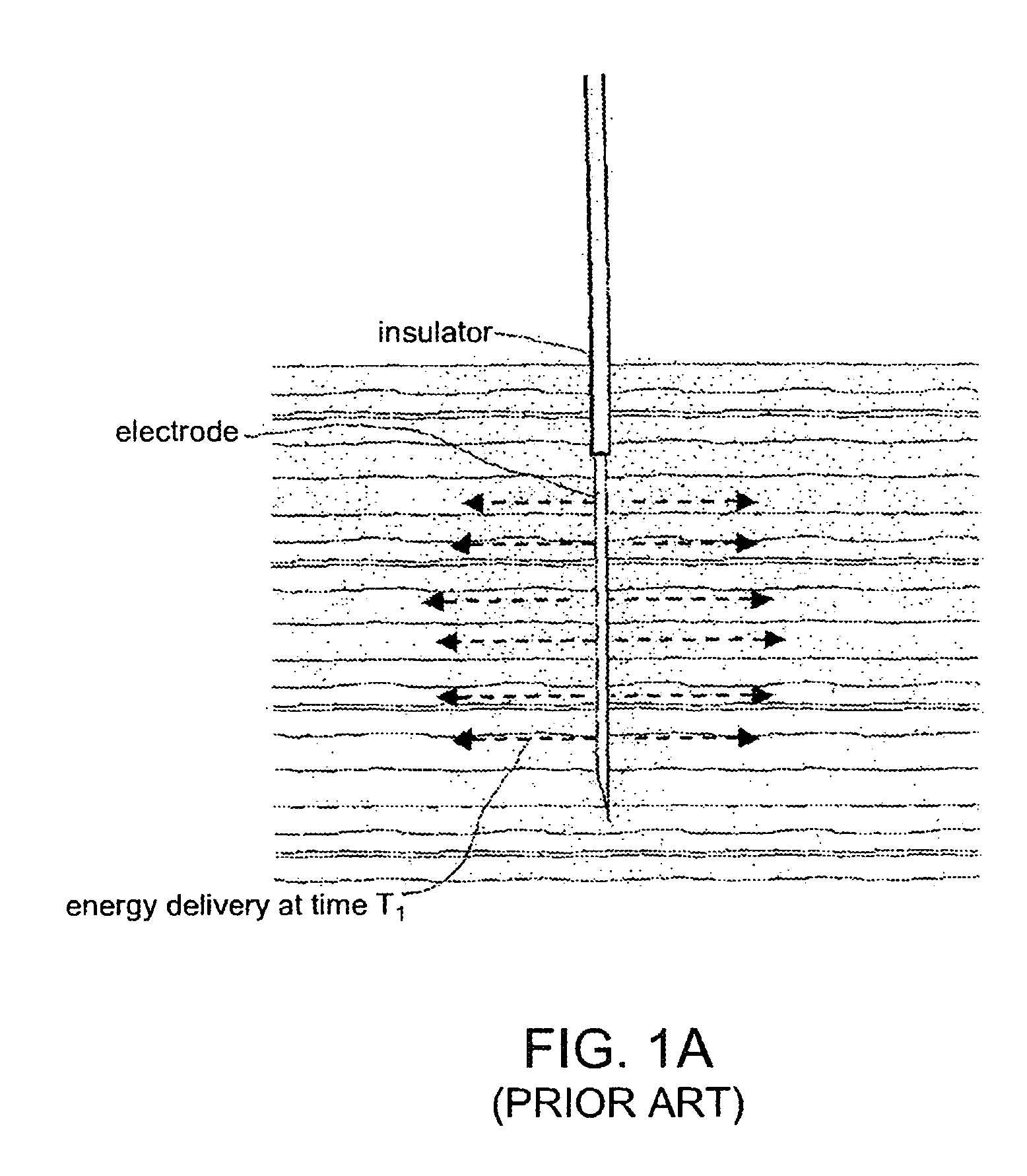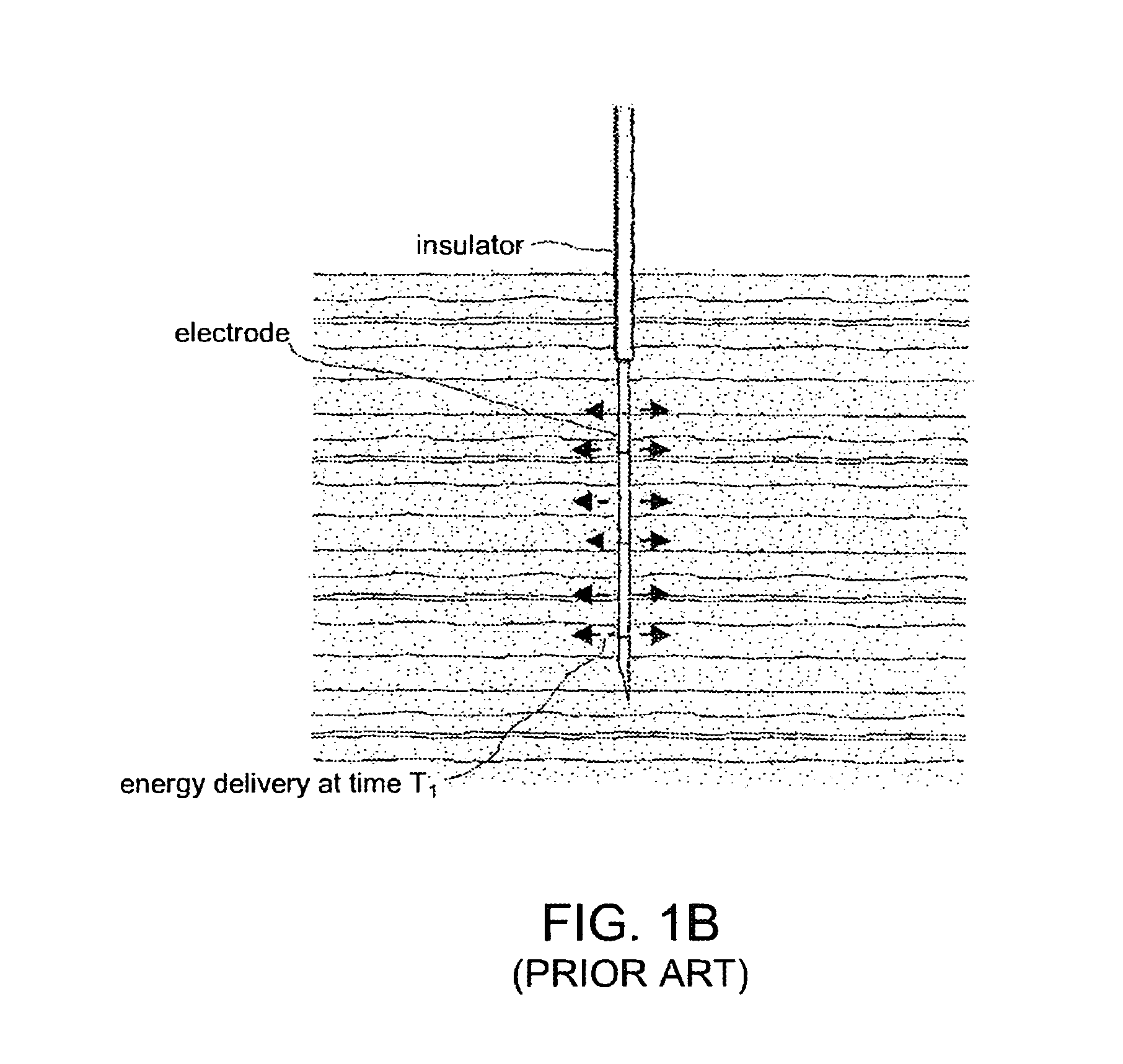Electrosurgical working end for controlled energy delivery
a working end and controlled technology, applied in the field of hyperthermic treatment or ablation systems of targeted tissues, can solve the problems of insufficient control and localization of tissue volume elevated in temperature, lack of fluid content in tissue, and may never allow substantial deep active rf energy in the tissue volume around the electrode, so as to reduce the application of rf energy, prevent any substantial dehydration of tissue, and effectively apply energy to the tissue
- Summary
- Abstract
- Description
- Claims
- Application Information
AI Technical Summary
Benefits of technology
Problems solved by technology
Method used
Image
Examples
Embodiment Construction
[0059]1. Type “A” probe for tumor ablation. An exemplary Type “A” probe 100 of the invention is illustrated in FIGS. 2 and 3 that is adapted for energy delivery to tissue, such as a targeted benign or malignant tumor. The probe 100 includes a proximal handle portion indicated at 106 and an introducer portion 110 that can be rigid or flexible in any suitable diameter. For example, the introducer portion 110 can be a diameter ranging from about 1 mm to 5 mm for use in percutaneous procedures or endoscopic procedures. The introducer portion extends from a proximal end 112a to a distal end 112b relative to longitudinal axis 115 and defines a bore 118 extending therethrough. The distal termination 112b of introducer 110 can be sharp for tissue penetration, as shown in FIGS. 2 and 3. In another embodiment, the introducer 110 can have a rounded distal end for introduction through a body passageway or lumen, such as an elongate catheter for endoluminal introduction. In another embodiment (n...
PUM
 Login to View More
Login to View More Abstract
Description
Claims
Application Information
 Login to View More
Login to View More - R&D
- Intellectual Property
- Life Sciences
- Materials
- Tech Scout
- Unparalleled Data Quality
- Higher Quality Content
- 60% Fewer Hallucinations
Browse by: Latest US Patents, China's latest patents, Technical Efficacy Thesaurus, Application Domain, Technology Topic, Popular Technical Reports.
© 2025 PatSnap. All rights reserved.Legal|Privacy policy|Modern Slavery Act Transparency Statement|Sitemap|About US| Contact US: help@patsnap.com



